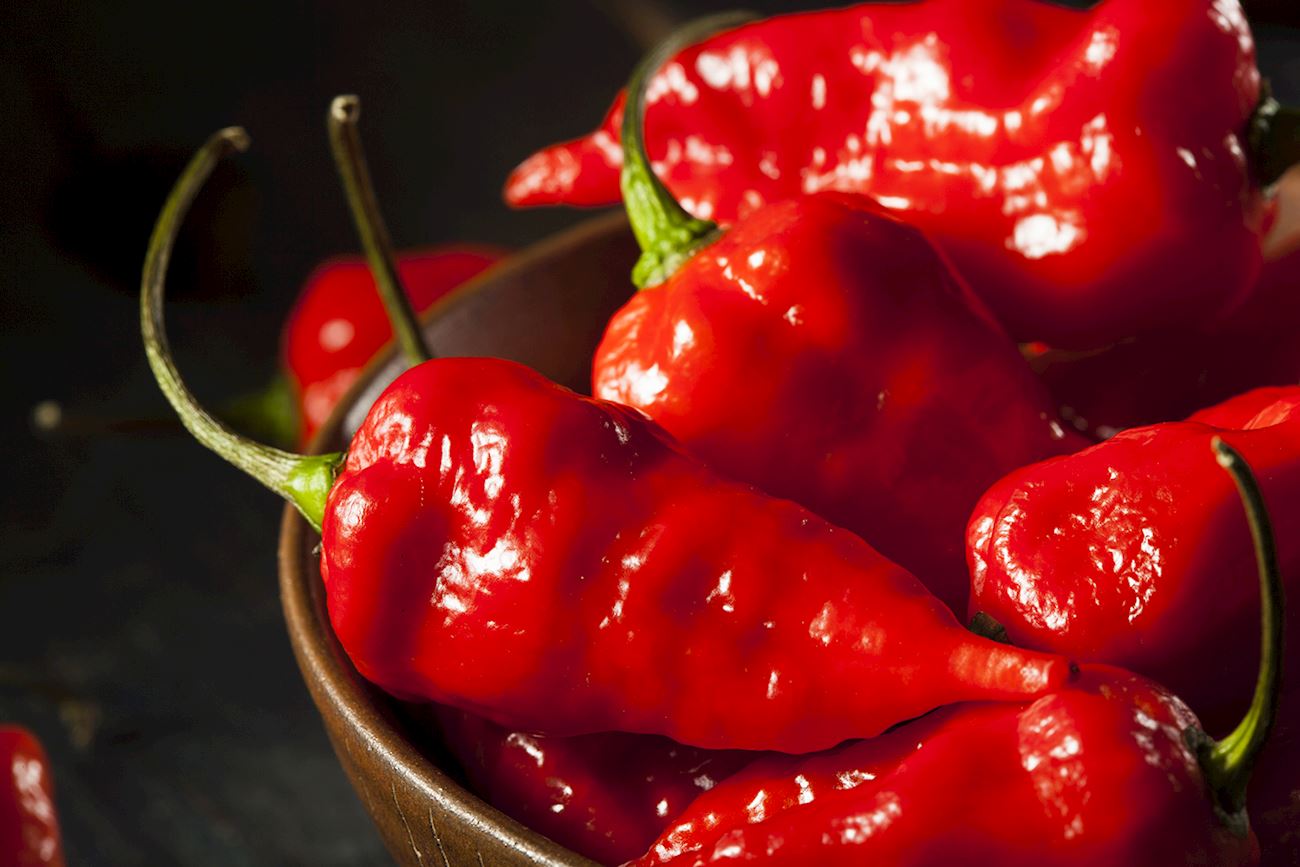TABLE OF CONTENTS
Best Indian Hot Pepper Types
Kashmiri chili is an Indian hot pepper originating from Kashmir. The chili has a vibrant red color and mild levels of heat, with Scoville heat units (SHU) ranging from 1,000 to 2,000. This staple of Indian cooking is typically used dried, either as powder or flakes.
This chili variety is highly praised for its red color that gives vibrancy to tandoori chicken, vindaloo, or rogan josh. In soups and braises, Kashmiri chili is often used as a substitute for paprika powder. The dried variety is conical, wrinkled, and elongated.
Ghost pepper or bhut jolokia is a hot chili pepper that's cultivated in the Northeast Indian states of Arunachal Pradesh, Assam, Nagaland, and Manipur. Due to the fact that it's one of the spiciest chili peppers in the world, the Indian Army even uses them to create military grade chili grenades (smoke bombs).
These peppers have a Scoville heat unit ranging from 855,000 to 1,041,427 SHU. The flavors are best described as fruity, sweet, and earthy. These hybrids of Capsicum chinense and Capsicum frutescens were proclaimed the world's hottest chili peppers in 2007 by Guinness World Records, but in 2013 the ghost pepper was superseded by Carolina Reaper, which can be twice as hot.
Byadgi mirch is a variety of dried red chili from the Byadgi region in Karnataka, India. It is widely celebrated for its vibrant red color, mild heat (5,000 - 15,000 SHU), and slightly smoky aroma, making it a preferred ingredient in Indian cooking.
The chili has a wrinkled and thin-skinned texture, making it easy to grind into fine chili powder. Byadgi mirch is commonly used to prepare bright red chili powder for Indian curries and spice blends like sambar powder and rasam powder. It adds a beautiful color and mild heat to chutneys and pickles, and when used whole in tadka (tempering), it infuses oil with its smoky flavor.
TasteAtlas food rankings are based on the ratings of the TasteAtlas audience, with a series of mechanisms that recognize real users and that ignore bot, nationalist or local patriotic ratings, and give additional value to the ratings of users that the system recognizes as knowledgeable. TasteAtlas Rankings should not be seen as the final global conclusion about food. Their purpose is to promote excellent local foods, instill pride in traditional dishes, and arouse curiosity about dishes you haven’t tried.



